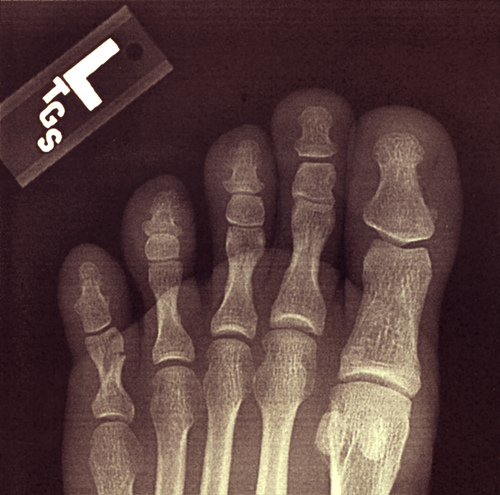X-rays are a normal part of medical visits for children, whether at the dentist to monitor growing teeth or at the hospital for a broken bone. However, parents should know about the potential risks involved in x-ray exposure. Although routine bone scans are normal and quite safe, too much exposure can increase these risks.Here’s what you should know about x-rays and your child’s safety.

How Do They Work?
X-rays are short wavelengths of electromagnetic energy. When they are passed through the body, they are absorbed by bigger atoms like bones but not by softer tissue, which is why bones show up on an x-ray. X-rays can cause cell damage, but our cells can repair themselves after a short x-ray exposure. X-rays are only harmful for adults if they receive x-rays too frequently because the radiation builds up. To give you a better idea, the radiation our bodies are exposed to during a normal x-ray is the same amount that we receive from naturally-occurring background radiation in 10 days.
Are they Safe for Children?
Children are more at risk for cell damage from x-ray radiation because their growing cells are dividing more frequently. As a result, the cells have a higher risk of mutating and passing on that mutation, which can potentially cause cancer. But again, this risk is caused by too many x-rays.X-rays on the chest, abdomen, arms, and legs are part of a routine check-up and should not be a cause for worry. However, computed topographic (CT) scans that provide images of the brain and other organs can expose a child to 200-300 times more radiation than a normal x-ray. These types of scans should only be performed on a child if they are absolutely medically necessary. Nevertheless, the risk of a child developing cancer from a CT scan is still very slim, and the long-term benefits of getting these scans usually outweigh the short-term risks.If you are concerned, it never hurts to talk to your child’s doctor or radiologist to make sure that the x-ray is necessary and safe. Sometimes the machines can be adjusted for a child’s size so that the amount of radiation they receive is as low as possible. In most cases, your child will also be provided with a lead apron to decrease exposure to areas of the body that aren’t being scanned.
About the author
Lisa Livingston owns the site Radiology Technician Schools. She likes to write articles related to healthcare and has been a radiologist for 7 years.
Lisa Livingston owns the site Radiology Technician Schools. She likes to write articles related to healthcare and has been a radiologist for 7 years.

